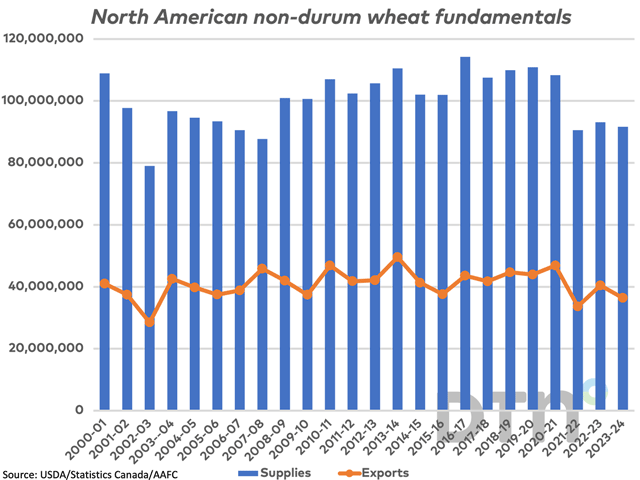
Following the release of the USDA's Small Grains Annual Summary on Sept. 29, we look at estimated non-durum wheat supplies for North America and the resulting export potential.

Following the release of the USDA's Small Grains Annual Summary on Sept. 29, we look at estimated non-durum wheat supplies for North America and the resulting export potential.

The August canola crush was the third largest August crush on record, only 845 mt lower than the August record set in 2020-21.
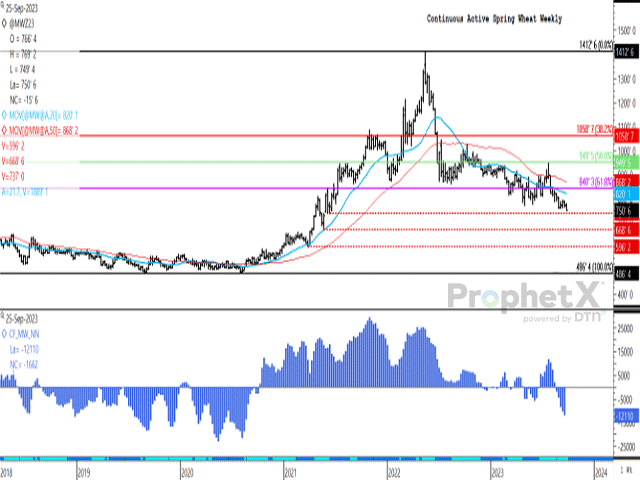
Hard wheat futures broke to new lows today, while Egypt shows patience in their quest to secure wheat imports.
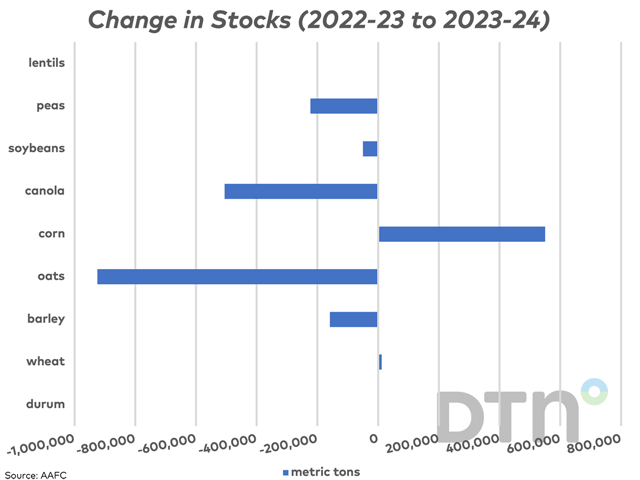
AAFC's 2023-24 supply and demand tables were revised this month to include the final official stocks estimates for 2022-23 along with Statistics Canada's model-based production estimates.

Alberta's latest crop shows an upward revision in yields, although official estimates show even greater potential and have tended to do so during the past three years.

As of week 7, cumulative producer deliveries as a percent of available supplies (estimated July 31 farm stocks added to Statistics Canada's production estimate) is equal to or greater than average for the largest principal field crops.
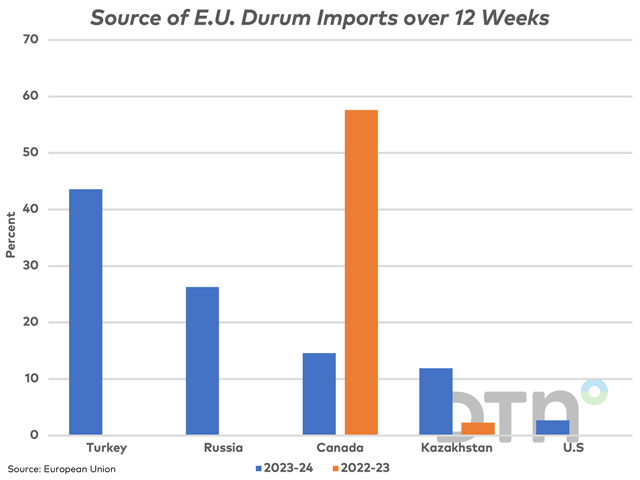
Canada's share of European Union durum imports has fallen sharply due to competitive pressures. The International Grains Council has forecast 2023-24 global ending stocks at the lowest in over 30 years.
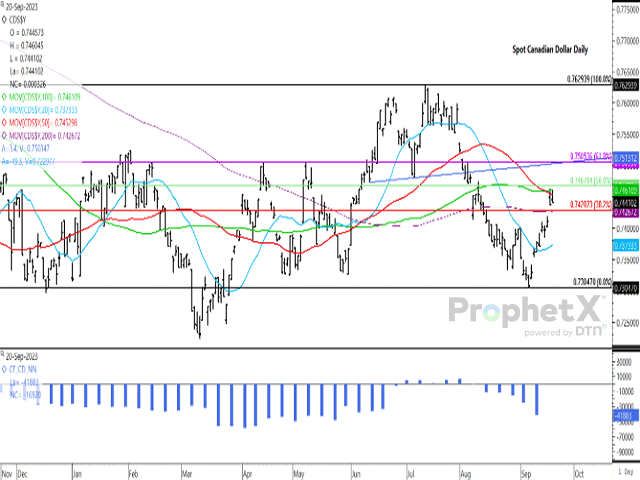
The Canadian dollar has rallied against the U.S. dollar this month, although there are technical signals that suggest the move is reaching an end.
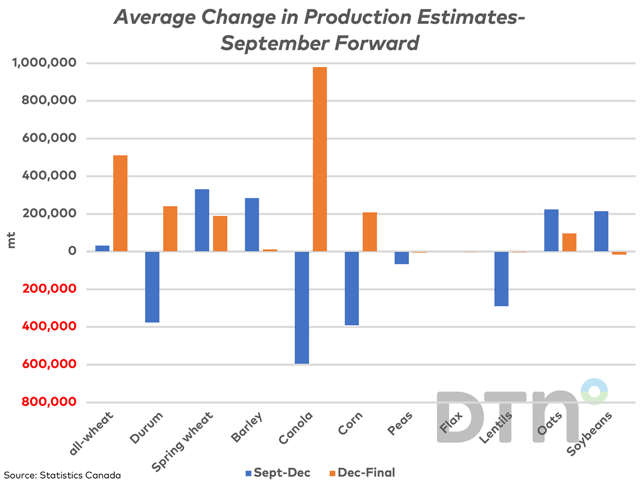
This study looks at the historical change in estimated production for select Canadian crops following the release of the August model-based estimates released in September.

November canola has slumped to potential support at the contract's 100-day moving average in Sept. 18 trade.
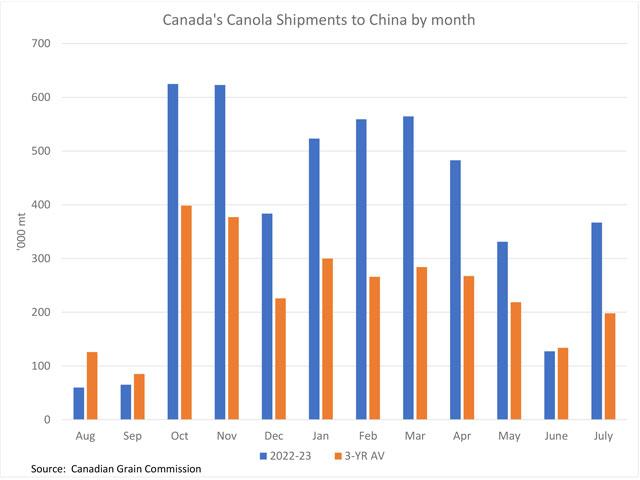
The USDA recently revised higher their estimate for China's 2022-23 canola/rapeseed imports, while over the past three years, the months of October and November have been the months where the largest volumes were shipped.
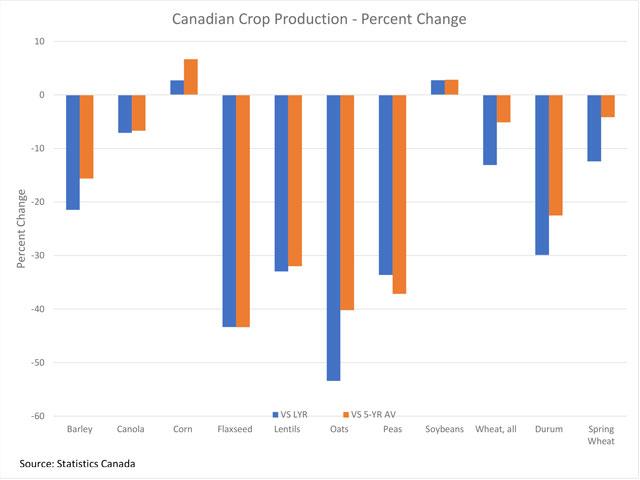
The largest changes in Statistics Canada's September production estimates, based on August model data, consist of an upward revision for spring wheat production, a lower revision for durum production, a lower revision for canola and a higher revision for corn.
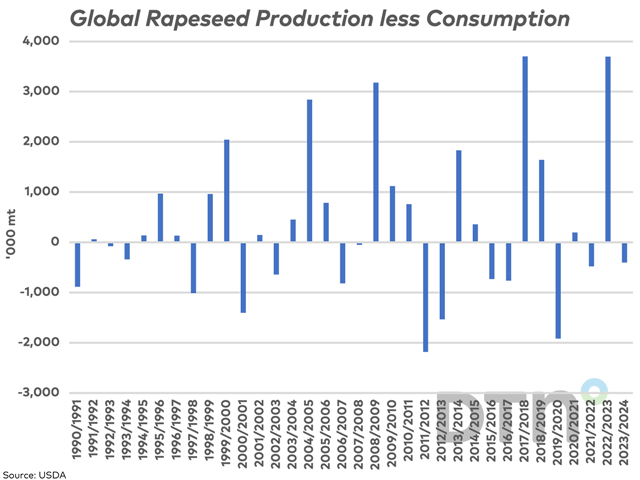
USDA forecasts show the largest year-over-year drop in global canola/rapeseed production in 23 years, while global consumption is to rise to a fresh global record in 2023-24.
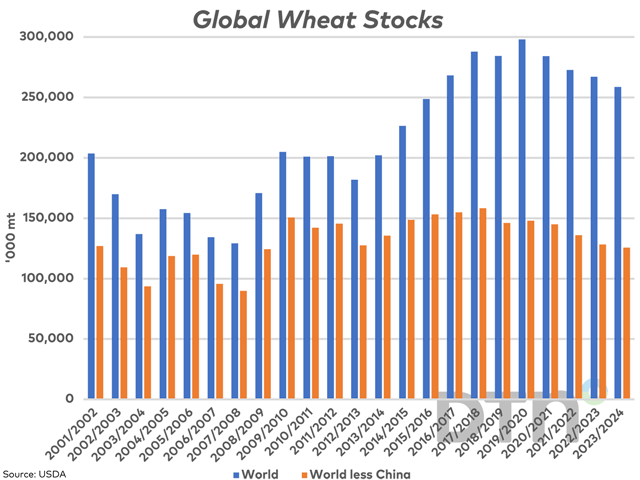
Wheat futures rose on Sept. 12 following bullish global estimates released by USDA.
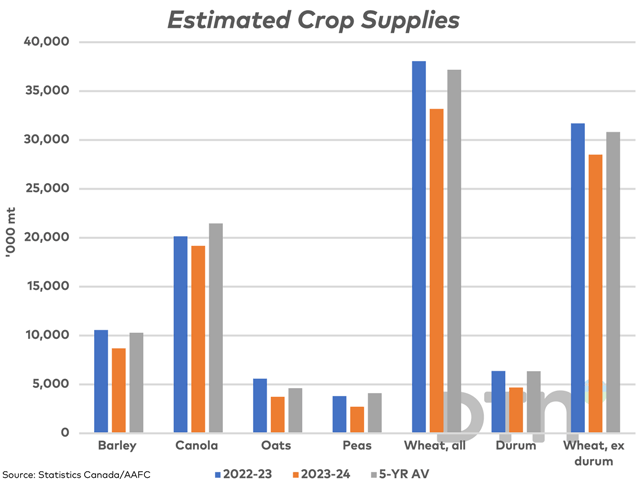
Statistics Canada's initial production estimates as well as July 31 stocks estimates are added to AAFC's estimates for imports to calculate crop-year supplies for 2023-24. These are compared to estimated supplies for 2022-23 and the five-year average.
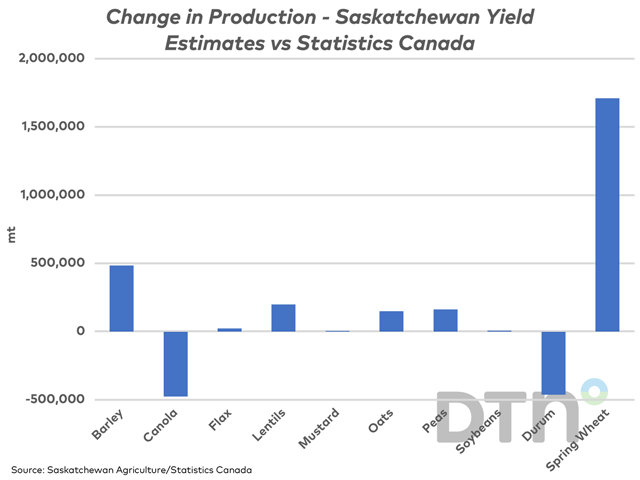
Saskatchewan Agriculture's first yield estimates for 2023 point to a larger crop than Statistics Canada's first model-based estimates would suggest.
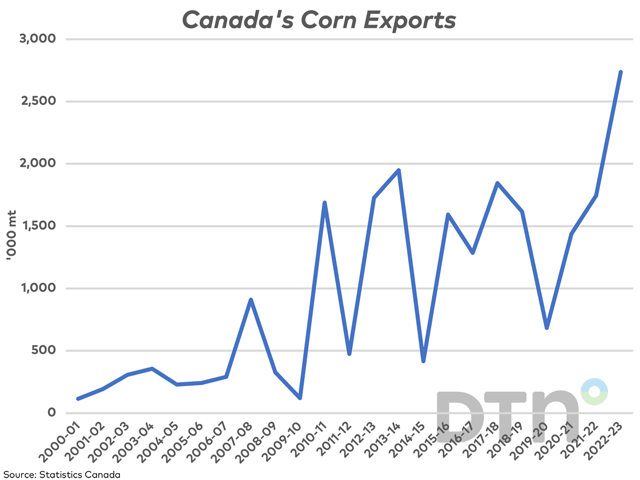
Today's Statistics Canada's July trade data shows activity for the final month of the 2022-23 crop year for all crops except corn and soybeans.
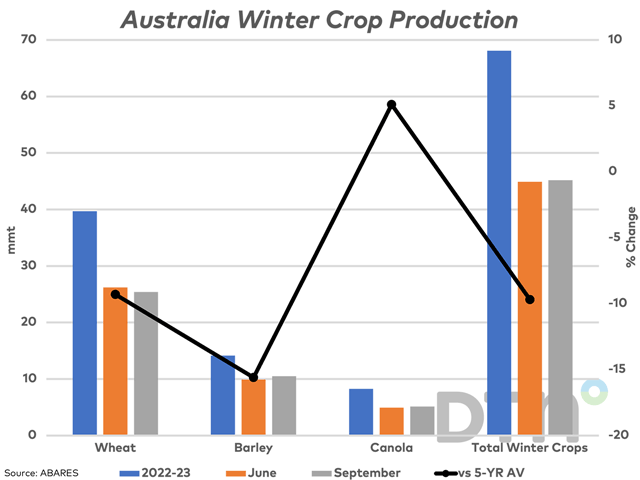
Australia's winter crop is forecast to fall 33.6% from the previous year with crops in southern regions faring well while northern growing areas are facing unfavorable conditions.
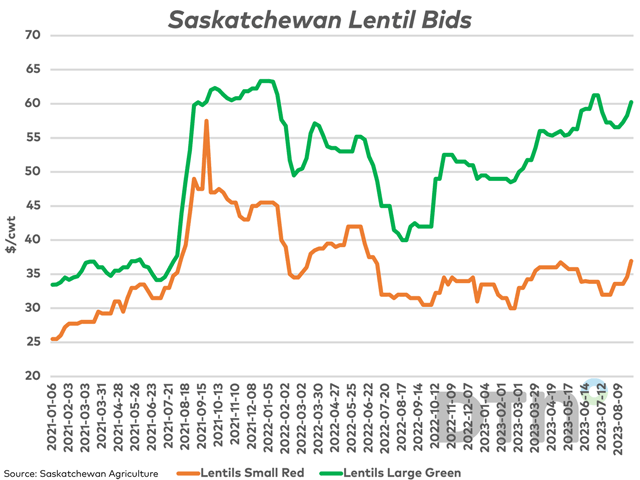
Both large green lentil and red lentil bids delivered to Saskatchewan plants have shown strength over recent weeks. This week's Statistics Canada production estimates based on July model data came in below trade expectations for lentils, leading to uncertainty.
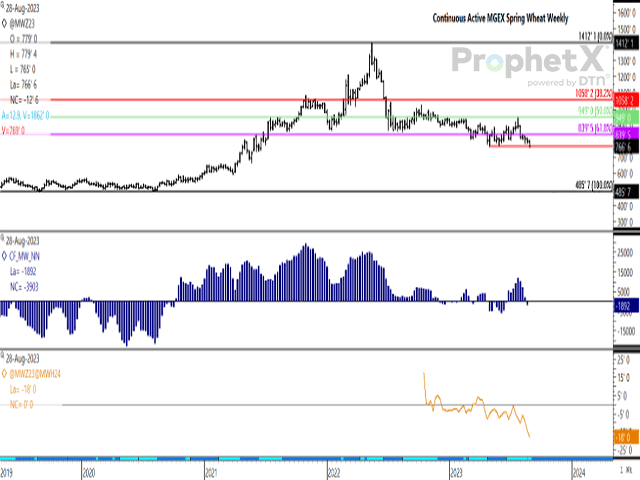
Today's move in the December MGEX contract resulted in the lowest trade on the continuous active chart since June 2021 or more than two years.
DIM[2x3] LBL[blogs-canada-markets-list] SEL[[data-native-ad-target=articleList]] IDX[2] TMPL[news] T[]
DIM[2x3] LBL[blogs-canada-markets-list-2] SEL[[data-native-ad-target=articleList]] IDX[5] TMPL[news] T[]